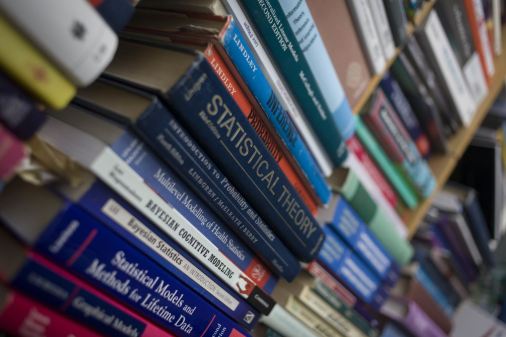7 tips for navigating the shift to open educational resources

Moving from traditional textbooks to open educational resources can improve accessibility to information and save students millions. But a speaker in a recent webinar hosted by edWeb.net say there are a few considerations administrators should keep in mind as they take on the shift to OER.
Michael Nelson, director of curriculum and assessments for Coeur d’Alene Public Schools in Idaho, says his schools are shifting to an OER environment as part of their overall plans to improve individual student achievement. He noted a few key lessons he’s learned so far:
1. Get community buy-in
Nelson says his community wasn’t satisfied with its achievement levels and graduation rates. Getting support for the OER initiative meant that leadership could investigate methods beyond the traditional classroom.
2. Embrace a new teaching philosophy
Instead of what Nelson termed “spray and pray,” wherein teachers would provide all students with similar instruction and hope the information sticks, district leaders decided to embed collaboration into every school day. That meant that they needed an array of vetted resources students could access for their lessons.
While educators are still responsible for helping students reach state standards and community growth expectations, one-third of lesson time is spent on items unrelated to state standards. This allows students to delve deeper into concepts and their individual interests.
3. Vet the materials
For every subject, K-12 teachers have a stock book of vetted OER lessons. While they can add to the book, every year the entire book is evaluated by an ad hoc advisory board, which includes educators and community members. For instance, when looking at Earth science resources, members of the Fish and Wildlife administration may be a part of the committee. Nelson estimated the books would be more than 600 pages long if printed out. The variety and scope of lessons allow teachers to differentiate for individual students’ needs.
4. Set clear K-12 learning goals
Content is addressed across K-12 so that the lessons in kindergarten set a foundation for work towards proficiency and learning goals that will be performed in the following grades.
5. Develop unique pathways for all students
Instead of just exceptional students or students who require an individualized education program, all students in the district have a distinct plan for their learning goals.
6. Think personalized — not specialized — materials
Because all students have their own learning plans, teachers look for resources that fit those goals and don’t focus on if the materials are for special needs students or gifted students, but for the individuals themselves.
7. Conduct regular check-ins
In addition to evaluating stock books, there are frequent check-ins with the students to make sure they are on target to reach state standards and to meet their individual plan goals.
Overall, Nelson says says the goal is to have teachers find, vet, and organize the stock books for each subject.
“We’ve developed our own [coursework],” Nelson says. “Philosophically, we would rather pay our teachers for the content that they have, the content that they’ve developed in their own professional learning than … pay for publishers. That’s not a slight to publishing in general, but I think we’ve created a culture whereby our content teachers really need to feel valued. And the way that we value them is by engaging them in the process of teaching and learning.”
About the presenter
A graduate of Coeur d’Alene Public Schools, Dr. Mike Nelson works with district educators to provide current and relevant teaching materials and verifies that students are working to meet or exceed district and state standards. Idaho’s Milken National Educator from 2005, Mike is also responsible for the district’s assessment program, curriculum-related professional development, and works with our Technology and Special Education departments to ensure student engagement. He holds six degrees from the University of Idaho in Spanish, broadcast journalism, curriculum, technology, administration and holds a doctorate of philosophy in educational leadership.
Join the community
Essential Elements for Digital Content is a free professional learning community on edWeb.net that provides policymakers, school administrators and educator leaders a better understanding of policies and practices related to digital instructional materials.
The edWeb webinar referenced above, hosted by SETDA and sponsored by the Bill & Melinda Gates Foundation, can be found here.




